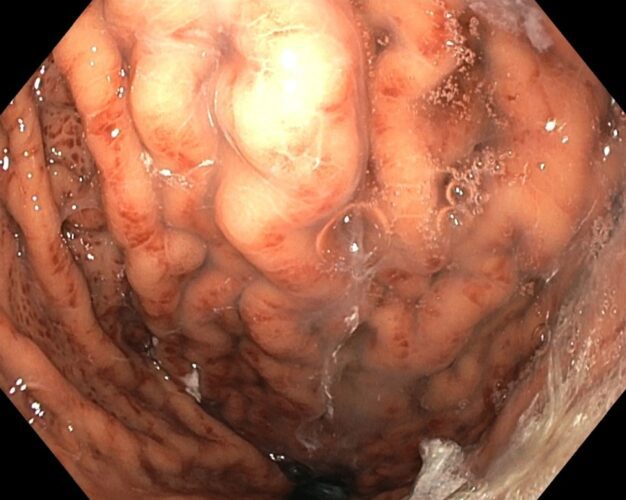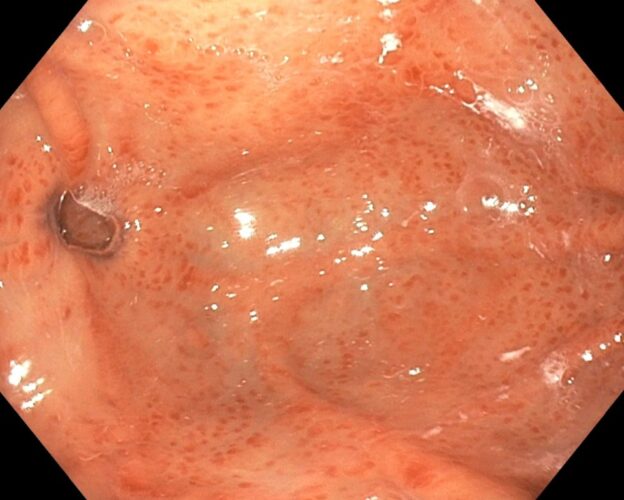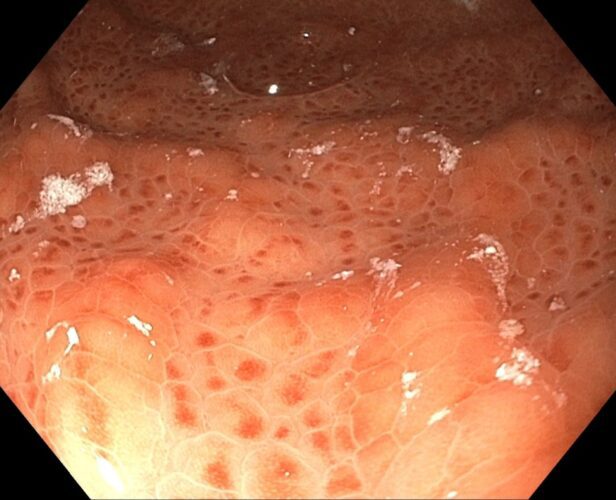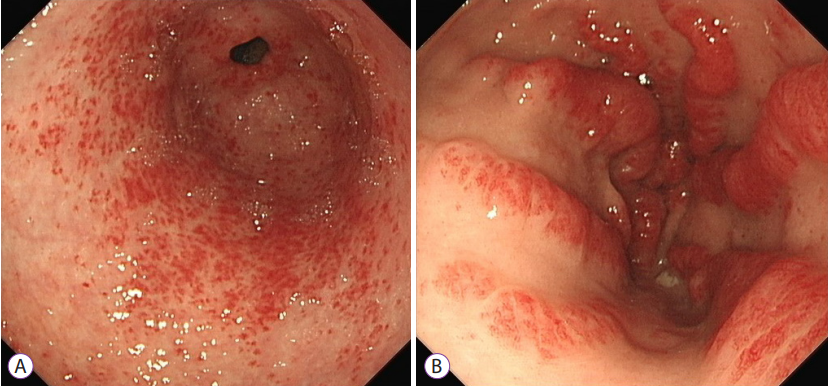Case 11: A 53-Year-Old Man with Hematemesis
This 53-year-old man with decompensated alcohol-associated liver cirrhosis with ascites and known esophageal varices presents to the ED with a one day history of coffee-ground emesis, hematemsis, and melena. An upper endoscopy is performed, which reveals the following mucosal changes in the fundus, body, and antrum of the stomach. What explains this endoscopic finding?






This patient with known portal hypertension secondary to liver cirrhosis has endoscopic findings of portal hypertensive gastropathy (PHG). The underlying pathophysiology is presumed to be secondary to high portal pressures, with studies demonstrating endoscopic emprovement following TIPS or non-selective beta blockers.
PHG can present with both chronic or acute gastrointestinal bleeding. It can be diagnosed endoscopically, with a mosaic-like pattern resembling ‘snake-skin mucosa’. The most severe form of the disease includes lesions that are discrete red spots (such as in this case), which are often accompanied by bleeding.
![]()
![]()


The differential diagnosis for PHG includes gastric antral vascular ectasia (GAVE) or ‘watermelon stomach’. GAVE (see images below) also presents with flat red spots, but typically does not have the snakeskin mosaic pattern, and often appears as erythematous streaks emanating from the pylorus. Further, while GAVE is usually located in the distal stomach, PHG is typically found more proximally in the fundus and body of the stomach, although there can be geographical overlap, such as in this case.


Sources: Rockey DC. An Update: Portal Hypertensive Gastropathy and Colopathy. Clin Liver Dis. 2019;23(4):643-658. doi:10.1016/j.cld.2019.07.002. Available from https://pubmed.ncbi.nlm.nih.gov/31563216/
O’Morain NR, O’Donovan H, Conlon C, Shannon E, Manning D, Slattery E. Is Endoscopic Band Ligation a Superior Treatment Modality for Gastric Antral Vascular Ectasia Compared to Argon Plasma Coagulation?. Clin Endosc. 2021;54(4):548-554. doi:10.5946/ce.2020.236. Available from https://pubmed.ncbi.nlm.nih.gov/33435659/